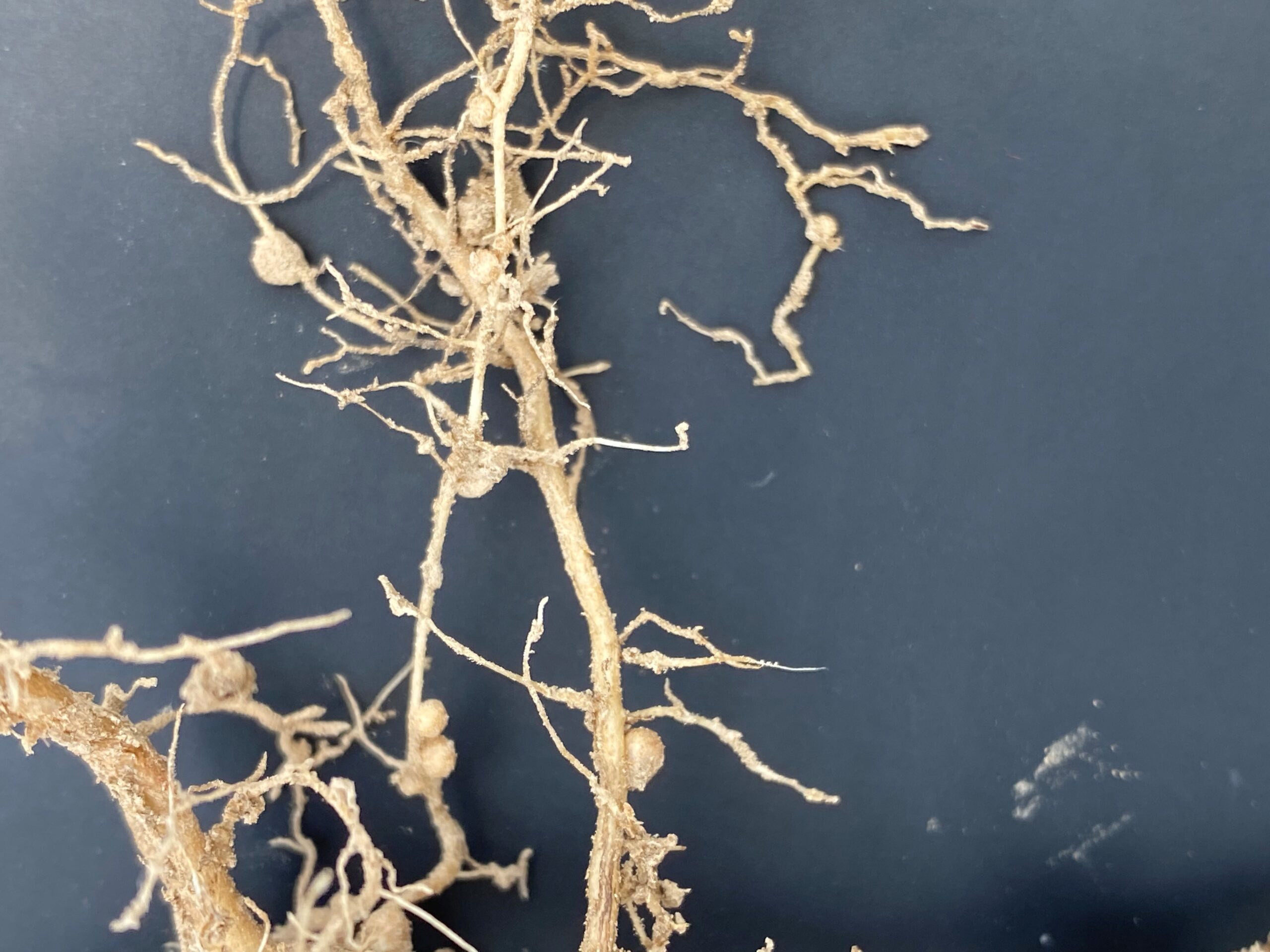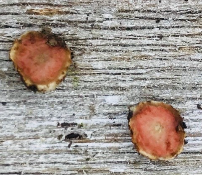What do they do?
Soybeans are self-sufficient in their ability to fixate a large percentage of their own nitrogen, a unique ability provided to them by nodules. Soybeans fixate Rhizobia bacteria, causing swelling on the root system. The nodules’ process begins shortly after emergence while the root system is developing. Studies have found that fixation can start after the first trifoliate leaves unfold. The development of nodules on the roots will continue up until the R5 growth stage. Nodules take nitrogen gas and turn it into plant available nitrogen. If an environment is unsuitable for nodules to live and supply nitrogen to a soybean plant, the structure will die off and the inside will become dark.
Nodule health
When inspecting fields, it is important to dig up soybeans plants in several locations and examine the root system. Count the number of nodules (main root and lateral roots), cut them open and look at the color. Pink and reddish nodules are healthy nodes that are actively working for the plant, compared to brown and white which have no nitrogen fixation capabilities.

 When there is nitrogen left in the soil or an application of nitrogen during the growing season, the soybean plant will have fewer nodules since it will not need to fix all the plant’s needed nitrogen. There has been a lot of research done on this topic to better understand nitrogen management and soybeans. It’s important to note that a soybean plant will require more nitrogen per bushel of grain then corn, but we do not do much to manage this important nutrient. It’s been discovered that when reaching for higher yields, time needs to be invested in understanding needs and limiting factors and not assuming the nodules will take care of the full needs.
When there is nitrogen left in the soil or an application of nitrogen during the growing season, the soybean plant will have fewer nodules since it will not need to fix all the plant’s needed nitrogen. There has been a lot of research done on this topic to better understand nitrogen management and soybeans. It’s important to note that a soybean plant will require more nitrogen per bushel of grain then corn, but we do not do much to manage this important nutrient. It’s been discovered that when reaching for higher yields, time needs to be invested in understanding needs and limiting factors and not assuming the nodules will take care of the full needs.
Inoculant
Soybeans release a compound recognized by the Rhizobia bacteria which will result in the establishment of the symbiotic relationship. Soils that have low organic matter, inadequate pH, compaction, or have been in a long-term corn rotation don’t contain environments favorable to a strong population of the bacteria.
Many Illinois soybean producers have started utilizing inoculants to stimulate bacteria populations for a soybean crop. Inoculants aid soybeans in nitrogen fixation and can result in a yield advantage. Today there are sterile and non-sterile powdered peat and liquid based inoculants, but each product is different in its volume of bacteria, in the quality of inoculant and how long the product is viable. It’s very important that Illinois soybean producers do their homework when selecting the right inoculant, because the option that is cheap and easy to apply close to harvest may not provide the best ROI. It’s also important now to dig up roots that were treated with an inoculant to better understand how effectively the product worked in your given fields.


 and then
and then